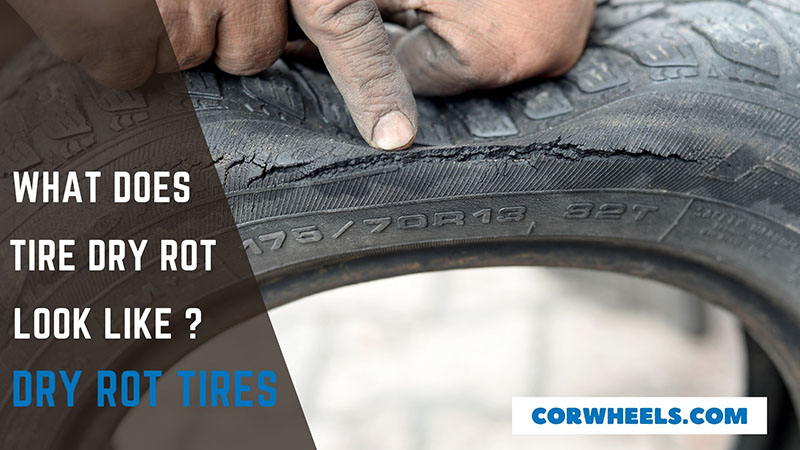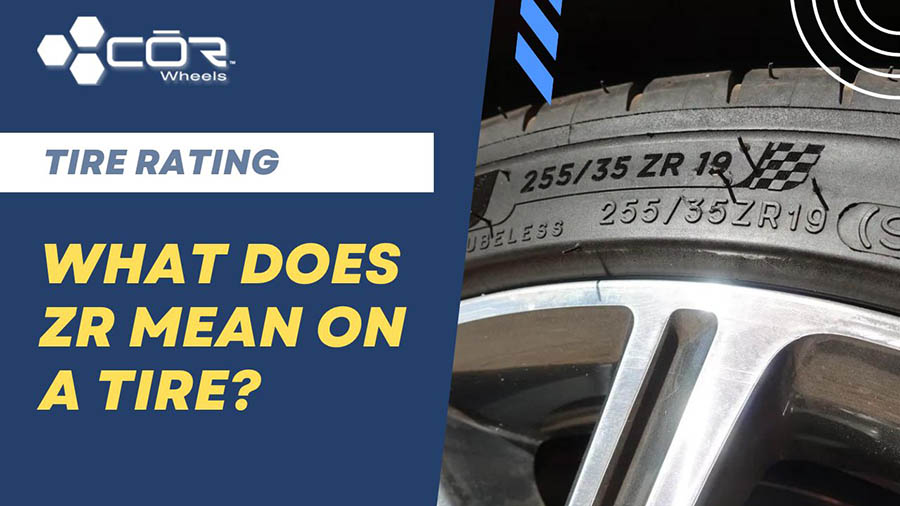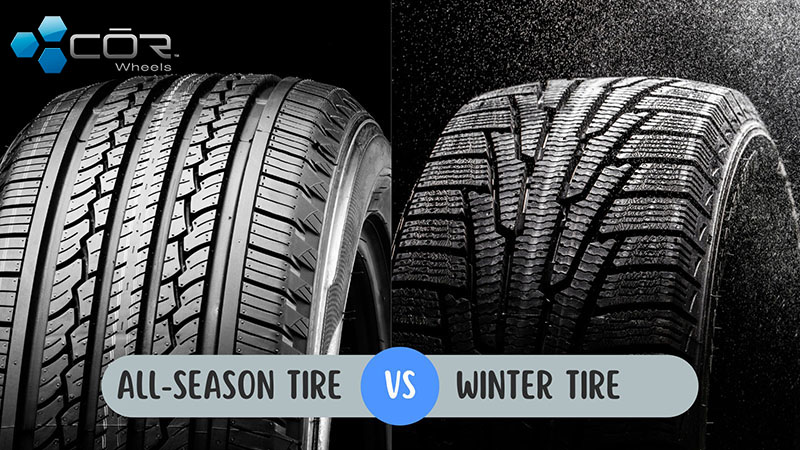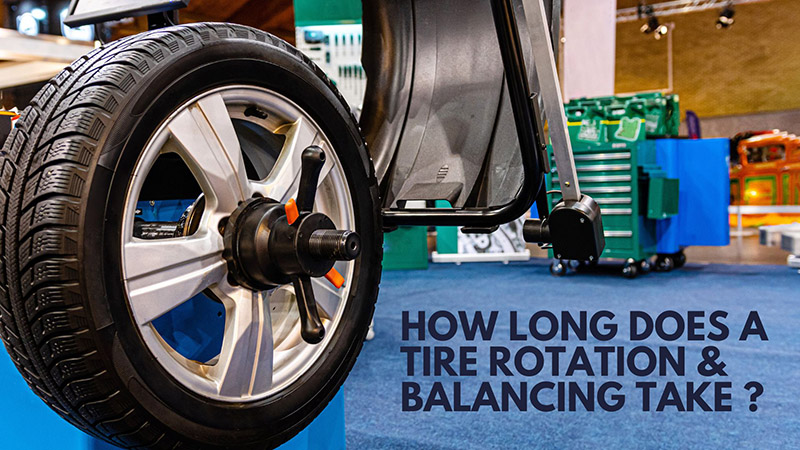Tire replacement occurs periodically as the treads wear out after exposure to the road surface. Unfortunately, this component may become useless before the end of its lifespan due to internal damage, such as dry rot. The question is: What does dry rot look like on tires? Scroll down to learn the symptoms and prevention.
In this article:
What Are The Dry Rotted Tires And Their Effects On A Vehicle?
Dry rot on tires indicates internal decay, where the rubber compound dries out and loses its elasticity. This condition can be part of aging and also accelerate the process.
Unfortunately, it leaves significant consequences for your vehicle. This condition creates slits or holes that push air outside of the tire, ending up with improper inflation. Additionally, it may lead to a reluctant expansion of the rubber layer. The tire then suffers from excessive tension and, worse, separates from the rest.
How To Tell If Tires Are Dry Rotted?
On the bright side, owners can spot the warning signs to treat cracked tires better. Also known as lateral weathering, tire dry rot manifests itself with the following symptoms depending on severity:
Crispy outside
As its name suggests, sidewall cracking strips off the lubricating oil layer, making the surface harder than ideal. The tire then becomes more brittle and even peels off small pieces of rubber under certain impact.
Cracks in the sidewall
You may see a sidewall crack shortly after the dryness emerges. Compared to the first symptom, the naked eye can easily notice this if you pay attention to your tire. Due to the absence of timely precautions, the bad condition begins to spread from small areas to large ones around the wheel hub cap.

Cracks on the tread pattern
At severe levels, cracks appear on the tread’s outer edge, though the tread depth still meets the manufacturer’s recommendations. These traits affect your control as soon as they arrive. The terrible news is that they continue to spread and disrupt the external structure.
Faded color
From the jet-black surface, dry rot causes your tires to turn gray. Discoloration may occur before or at the same time as the symptoms above.
What Causes Tires To Dry Rot?
The truth is that tires rarely last more than 6 years. Made from synthetic compounds, the rubber bands degrade and wither. However, aging is not one of the main causes of lateral weathering.
For instance, New Mexico, Nevada, or Arizona cars tend to crack the sidewalls sooner than the rest. So what causes the different lifespans? The root of the problem comes from the following six factors:
- Excessive exposure to UV rays
- Extreme temperature (both low and high)
- Corrosive chemicals (e.g., pool treatment chemicals, industrial cleaners, engine oils, etc.)
- Close contact with electrical equipment (e.g., battery chargers, electric machines, electric motors, welding equipment, etc.) and other ozone-generating devices
- Low PSI in tires
- The lack of usage or proper storage

Each factor above develops under different conditions yet poses the same risk. Suppose you install two twin items for two vehicles – one for normal operation and the other for garage parking. Moving tires tend to last longer than the rest as those protective compounds are activated.
The more determinants are involved, or the more extreme the influence, the faster your items damaged. That’s why owners always get the advice to take comprehensive maintenance of their tires.
How To Prevent Tire Dry Rotting
Periodic Inspection And Maintenance
Good maintenance is the best prevention from premature cracks. This does not mean expensive services at repair centers but focusing on the home upkeep of your tires. If you have no experience with this, follow our tips.
- Perform regular inspection
Fortunately, the signs of sidewall cracks are easy to notice with the naked eye. Hence, it is best to check the tires once a month to detect any abnormalities in time. Be on your guard when winter and summer come, as unfavorable weather conditions increase the risks.
- Clean with gentle chemicals
From now on, add one important task to your to-do list at the end of each month: cleaning the tires. All you need is mild soap (dish soap also works), a cleaning cloth, and a garden hose. Buy water-based products as they remove stains without damaging the protective oxidation layer.
An extra step worth considering is tire dressing, which adds additional UV protection to your items. Some auto repair shops offer this service with a “tire polishing” banner.
Do not hesitate to DIY to save money, as you only need to pay for a product available at accessory stores. Put the solution on the sponge, cover the surface, and wait 5-10 minutes.

- Pay attention to the parking location.
Few vehicle owners keep an eye on the parking location due to the belief that a short period is not harmful to leave the car outside. However, direct sunlight can kill tires slowly, especially in hot areas. Find a shade for your vehicle, or bring a tarp whenever you go out.
- Provide adequate air pressure.
Underinflated tires generate excessive heat and wear, leading to cracking or separation from the rim. Your tire must maintain the correct level of pressure as the manufacturer recommends to prolong its life. Most importantly, the proper air pump keeps you safe from sidewall blowout.
- Never surpass load rating.
Along with inflation level, load capacity is an important indicator of a tire’s endurance. The overload puts considerable strain on the tire, thus tearing the rubber threads.
Parking Care
- Clean and dry the tires before storing
It’s a nightmare when you come back with untidy tires after a while. Moisture from mud and dirt removes oil from the rubber surface and contributes to sidewall weathering. Do the cleaning as usual, leave it to dry, and then store the car. Minimize the weight of the tires as much as possible.
- Look for a safe location.
It is best to leave your vehicle in the parking lot or garage. However, be aware of room temperature and nearby sources of ozone or chemicals. An absolute rule is to stay away from direct sunlight and oil spills. If you don’t have an ideal parking spot, mask your car with a high-quality cover.
- Try to drive your car at least once a month.
Always remember that the lack of usage is also a recipe for dry rot tires. So don’t let your car sit still for months on end; instead, take it out for a few miles every month. This activates oxidants to protect the rubber fibers.
- Tips for spare items
If you plan to store your vehicle for over three months, remove the tire and install a hydraulic bracket instead. Then put them in an airtight bag to prevent harmful agents from entering.
You can find specialized storage bags in various sizes at repair shops. Another idea is to use vacuum sealers and large industrial plastic bags. In short, do your best to keep moisture, sunlight, or any other extremes away from your tires.
FAQs
Is It Safe To Drive With Dry Rot Tires?
Certainly, NO. If you must travel on a dry rotted tire, it should only be a trip to the mechanic. As noted above, the condition causes a pressure drop. Depending on the actual situation, this brings about certain troubles in steering and handling. Over time, the cracks widen and are prone to blow out at any time.
Can You Fix Dry Rot?
Unfortunately, NO. Despite ongoing controversies about the actual effect of tire gel and some other repair compounds, an unrecognizable fact is that the damage has destroyed the internal structure.
Some experts believe that incremental tools only accelerate the damage. For instance, some available gels add a glossy oil layer to the rubber surface but have no healing result.
How Long Do The Influencing Factors Cause The Tire To Dry Rot?
There is no one-size-fits-all answer as poor condition develops under many factors. A good reference timeline is about 5 years when you often leave your car exposed to direct sunlight. Once this condition comes along with the other causes listed above, the tire life shortens.
Conclusion
When is dry rot on tires dangerous? As soon as you notice cracks in the sidewalk and tread edges, your tires are at risk of damage and blowout.
Unfortunately, there is no cure for the situation, but you can slow down the collapse by adjusting your maintenance routine. However, prevention is better than cure. Review your care practices and make a change today.
For more:








